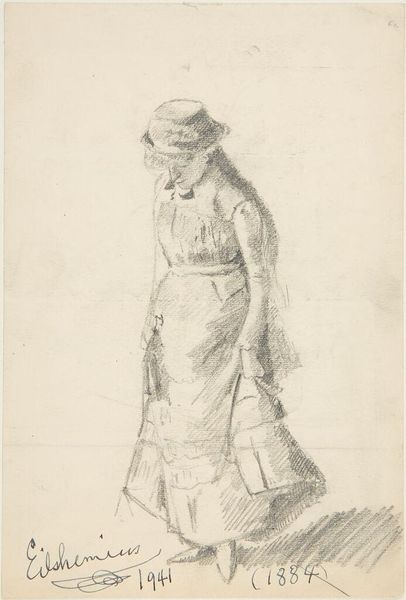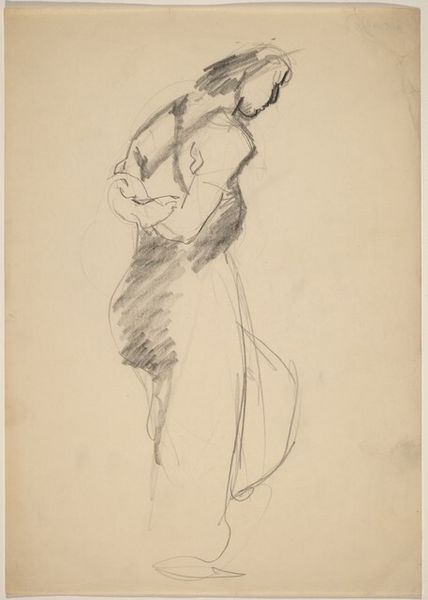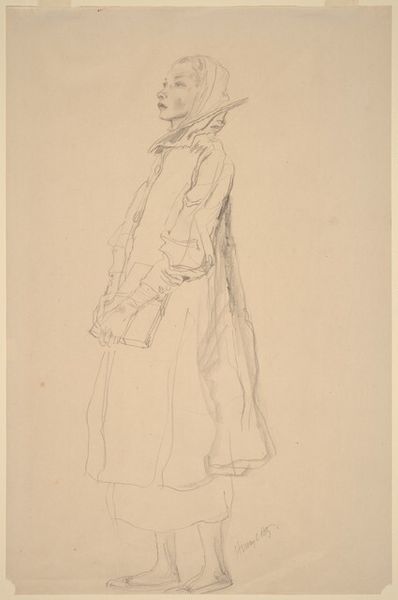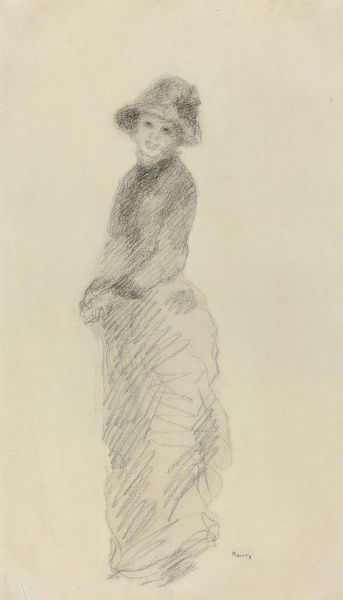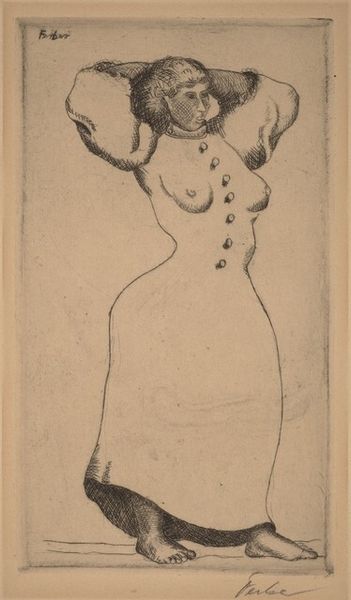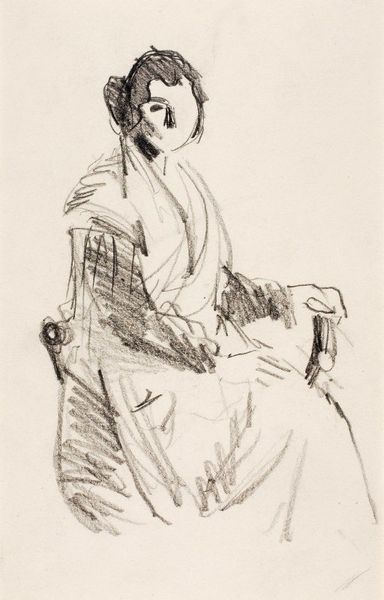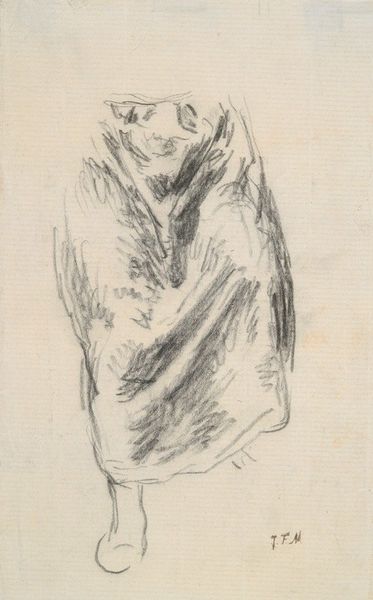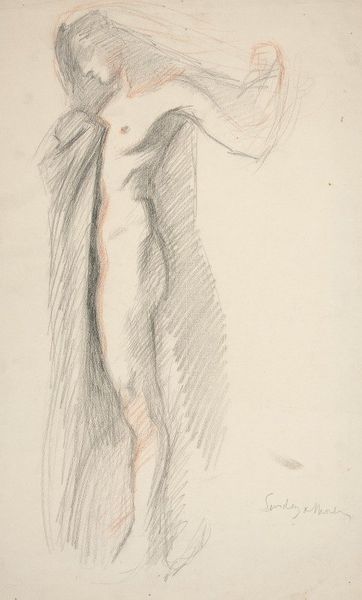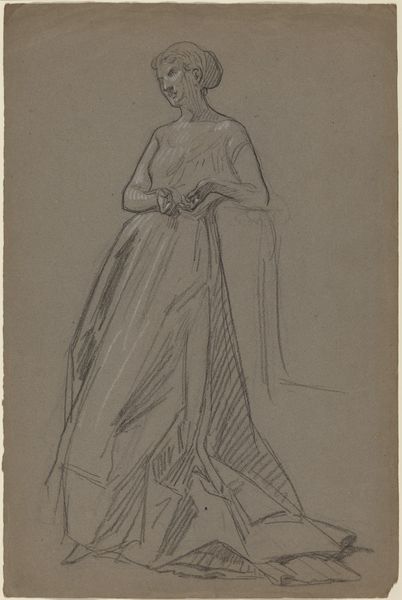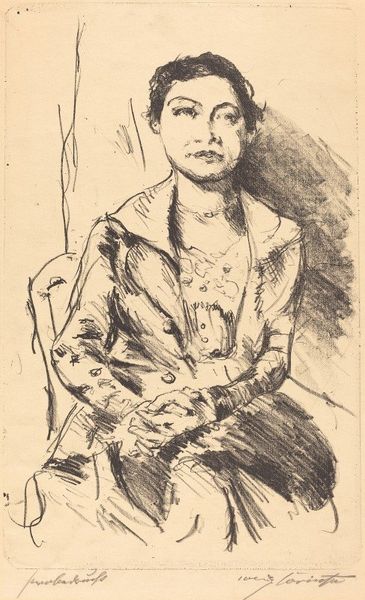
Dimensions: overall: 31.7 x 20.3 cm (12 1/2 x 8 in.)
Copyright: National Gallery of Art: CC0 1.0
Editor: We are looking at Abraham Walkowitz’s 1905 charcoal drawing, “Standing Figure.” There is something so somber and haunting about the piece. How do you interpret this work, given the social context of its time? Curator: Well, considering the date, 1905, it’s interesting to see this figure rendered in charcoal with such deliberate looseness. What does it evoke for you in terms of social position and gender expectations? It’s important to consider that this was a period where women’s roles were simultaneously celebrated and heavily policed. Editor: That's a good point! The looseness makes the figure feel less defined, like she's emerging or fading away, caught between social expectations and individual expression maybe? Curator: Precisely. The haziness subverts any conventional expectation of portraiture as a record of status and accomplishment. We see something different: a kind of ambiguity that speaks to the constraints, or perhaps the potential freedoms, available to women at the dawn of the modern era. Is the choice of charcoal itself, a medium often associated with sketches and preliminary studies, part of this statement? Editor: So, by not presenting her as a completed, fully realized figure, Walkowitz is questioning the fixed roles assigned to women? Curator: It's possible. We could see this “Standing Figure” as a symbol of transition, of women moving away from established societal constraints but not yet fully formed in a new, liberated identity. The artist is engaging with social change. It feels like he's observing and questioning the future roles of women in an evolving world. What do you make of that reading? Editor: It's fascinating! I didn't think about it that way at first, but seeing it as a statement about evolving gender roles makes the drawing so much more powerful. I really learned a lot. Thank you! Curator: Likewise! This conversation is a good reminder of how art reflects society's ever-shifting terrain, and how much art there is still to explore in society.
Comments
No comments
Be the first to comment and join the conversation on the ultimate creative platform.
